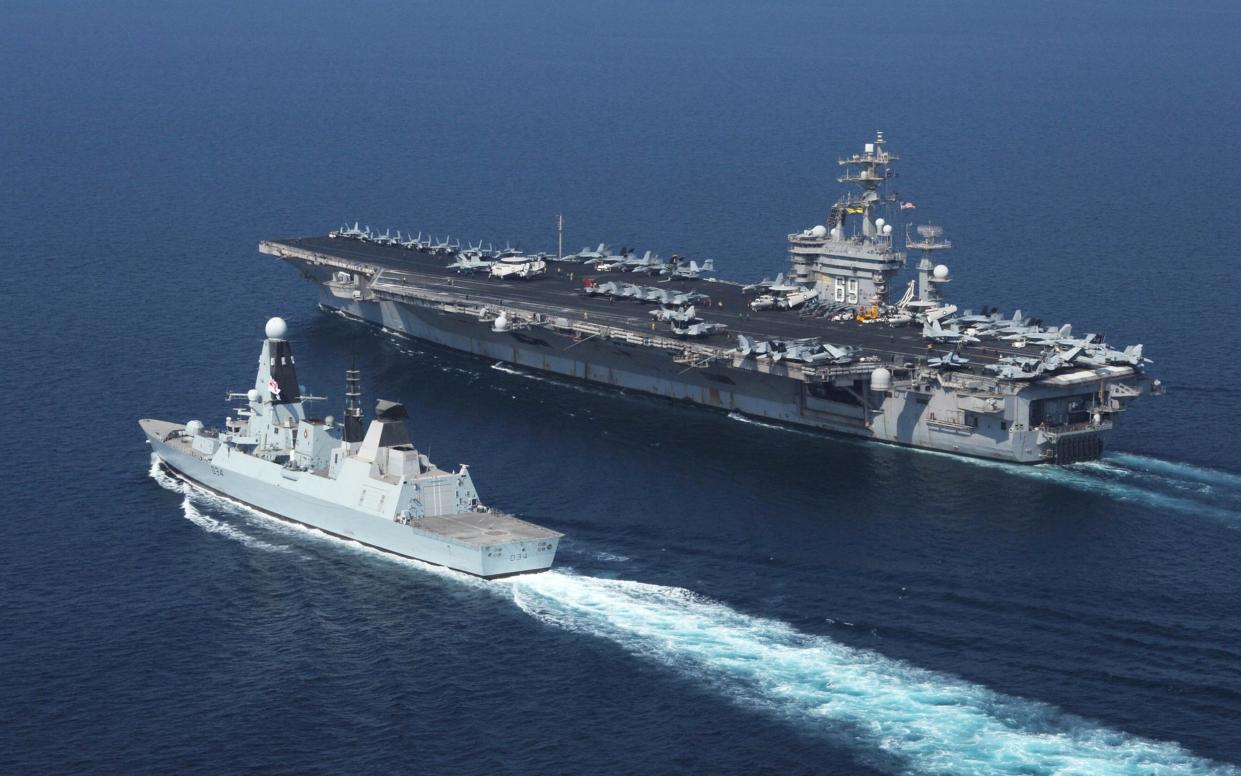Penny Mordaunt raises fears over Navy failing to ‘keep pace’ with Russia and China

- Oops!Something went wrong.Please try again later.
- Oops!Something went wrong.Please try again later.
Cabinet tensions over defence spending have surfaced as Penny Mordaunt warned Britain’s national interests are at risk unless the Royal Navy keeps pace with nations such as Russia and China.
Ms Mordaunt, a former defence secretary and leadership candidate, tweeted her warning above an image of a press article chronicling the decline in the size of the Royal Navy to a fraction of what it was in the last century.
It came as Defence Secretary Grant Shapps failed to set a date for hitting the Government’s target of increasing defence spending to 2.5 per cent of GDP, saying it would only be achieved “when economic conditions allow”.
It emerged earlier this month that the Navy is facing such a severe recruitment crisis that the Ministry of Defence (MoD) is planning to decommission two ships to free up sailors for a new fleet of frigates.
The size of the Royal Navy fleet has fallen from 232 ships, including eight aircraft carriers, in 1960 to 30 in 2022, including two new aircraft carriers.
But, in her tweet, Ms Mordaunt, an honorary captain in the Royal Navy Reserve and MP for Portsmouth North, said: “The Royal Navy and its partners must keep pace with the growing capabilities of other nations. If not, Britain’s interests cannot be secured.”
‘Secure our interests’
In the article in The Sunday Times, she added: “We must not just ask ourselves by how much Russia and China are increasing their fleets, but why.
“The future Royal Navy must be able to continue to secure our interests, which are entirely predicated on being able to thwart attempts to deny us access to the seas of certain parts of the world.”
Mr Shapps was challenged on the BBC to set a date for hitting the 2.5 per cent target at a time when he had warned about rising global threats.
He said it was “comfortably” above 2 per cent of GDP – the Nato benchmark – but not at 2.5 per cent yet. “There is a trajectory upwards. I can’t give you the exact date because we’ve always said it’s as the economic conditions allow. But the point is we’re working to a plan,” he added.
Responding to Ms Mordaunt’s comments, Mr Shapps said: “I’m in a post where there are a lot of people with opinions and a lot of people who’ve been in the military and armed forces will often express them.”
He defended the Chancellor’s focus on tax cuts rather than increasing defence spending, arguing “people do want to see more of the money that they earn kept”.
Facing a ‘pre-war world’
Last week, Mr Shapps made the case for increased Western defence spending, saying the UK was facing a “pre-war world”. In a speech last Monday, he set out the risks posed by countries, including China, Russia, Iran and North Korea, as well as terrorist groups in an increasingly dangerous world.
The speech was seen as a pitch by Mr Shapps for extra defence spending. Before taking on the defence brief, Mr Shapps had backed a level of spending in excess of the Government’s goal, arguing it should rise to 3 per cent.
Last week, Lord Dannatt, a former chief of the general staff, hit out at the shrinking size of the Army, which he said had fallen from 102,000 in 2006 to 74,000 today “and falling fast”.
He drew parallels with the 1930s when the “woeful” state of the UK’s armed forces failed to deter Hitler, saying there was “a serious danger of history repeating itself”.
But Mr Shapps insisted the size of the Army would not dip below 73,000 under the Tories. He said: “It’s not projected to go down to 50,000. It’s actually, specifically, to 73,000, plus the reserves.”

